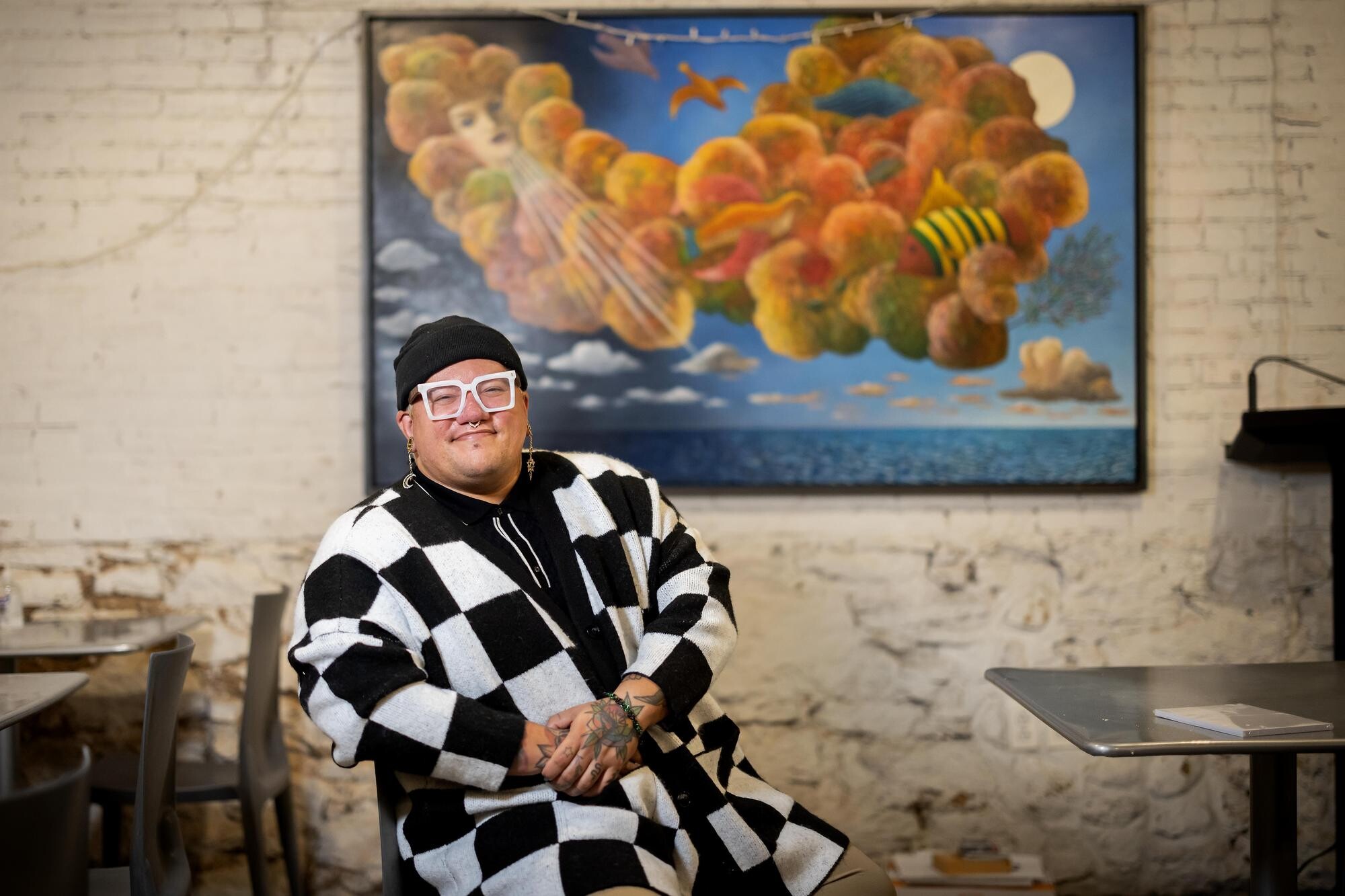
(From left) Doctoral student Hannah Yamagata, research assistant professor Kushol Gupta, and postdoctoral fellow Marshall Padilla holding 3D-printed models of nanoparticles.
(Image: Bella Ciervo)

One night a month, LGBT Center director Eric Anglero sits down with Center staff, faculty, and students for the Shapiro-Bezdek Family Dinners, a beloved tradition that was recently endowed by Penn alumnus Stuart Shapiro and their husband Rick Bezdek. The dinners create an environment of support for the LGBT community on campus and offer a moment, Anglero says, where “you can just be.”
Anglero has been in their new role for nearly a year and has plans for the Center’s continued growth, creating inclusion for people with marginalized genders and sexualities, both inside the LGBT Center itself and at Penn as a whole. “We are really trying to broaden what success looks like here beyond the walls of the Carriage House,” says Anglero, referring to their historic building just off Locust Walk.
In November, the Center hosted the Trans Day of Remembrance and Trans Week of Visibility in collaboration with the William Way LGBT Community Center in Philadelphia, along with partners at Penn, including Penn Carey Law, the Office of the University Registrar, and the Program in Gender, Sexuality, and Women’s Studies (GSWS). The Registrar hosted a clinic to explain how to change your birth name, and GSWS presented on the Trans Oral History Project, a community engagement initiative that preserves and makes publicly accessible the stories of trans, nonbinary, and gender-nonconforming people.
The weeklong programming is meant to both support trans community members at Penn as well as to hold “a place of mourning, of grief, of understanding the violence that has happened to trans communities across the globe,” Anglero says.
In the spring, the Center will welcome Chase Strangio of the American Civil Liberties Union, in partnership with Penn Carey Law as this year’s second scholar-in-residence. Events planned include Q Penn, the Center’s annual Pride Week beginning April 7, as well as Lavender Graduation, a celebration for the accomplishments of the graduating LGBTQ+ cultural community.
As part of University Life, connections and partnerships exist across the cultural centers, Anglero says. “There is so much infrastructure here we can strive to work with,” they say, noting that those intercultural connections can be impactful for students. Anglero also plans to continue partnering with queer and trans organizations in Philadelphia, including William Way, the Mazzoni Center, and even the Stonewall Sports League, which they participate in.
Anglero grew up in Lakewood, New Jersey, where the high school mascot was a lumberjack. A populous township with woods, and yes, a lake, “it was a really great place to find myself,” they say.
Later, at Ocean County Community College, Anglero got their start in organizing through the Catholic Church, “thinking about advocacy and community work through this religious lens,” they say. “We did everything from mission work to help folks build their houses when they were in disrepair.”
The experience also taught them about difference. “Even if folks didn’t agree with me, I found a way to reach out to them,” says Anglero.
Anglero later graduated from Stockton University with a history degree and became a substitute teacher. Terrified of public speaking, Anglero says this was like exposure therapy, leading them to earn a master’s degree in American studies before ending up in the LGBT nonprofit sector.
Anglero found they loved working with colleagues and with students. “I began to say, ‘Oh, this is a place where you can be really joyful,’” they say. It felt similar to their experience working in faith-based spaces; “the servitude and the joy come in into the verge of points here,” says Anglero.
In their free time, Anglero plays kickball, power lifts at gyms across the city, and likes to get tattoos, sometimes one on top of the other, erasing what no longer serves them. Their newest inked work is a unique butterfly. “From a queer, trans perspective, as a person identifies as nonbinary, there are these nonbinary butterflies that have two different wings, and they have what can be considered male/female characteristics” on opposing sides, Anglero says.
The nonbinary butterflies are bilateral gynandromorphs, also called chimera butterflies. On Anglero’s tattoo, the wings are blue, green, yellow, and orange, inked in different colors and patterns, a symbol of beauty, and transformation, and unexpected harmony.
Kristina Linnea García

(From left) Doctoral student Hannah Yamagata, research assistant professor Kushol Gupta, and postdoctoral fellow Marshall Padilla holding 3D-printed models of nanoparticles.
(Image: Bella Ciervo)

Jin Liu, Penn’s newest economics faculty member, specializes in international trade.
nocred

nocred

nocred